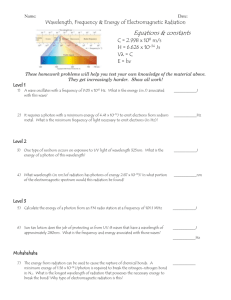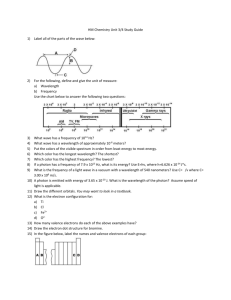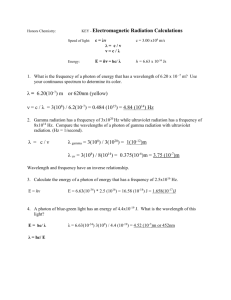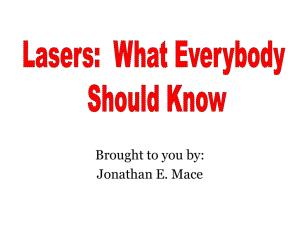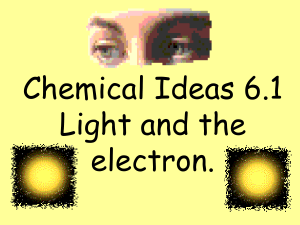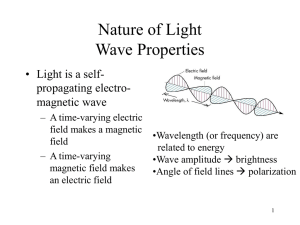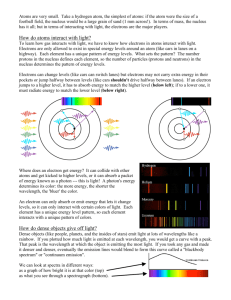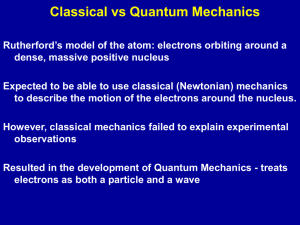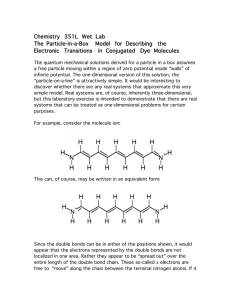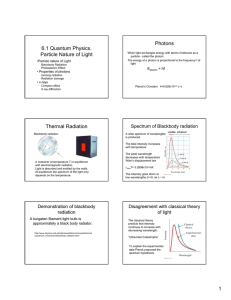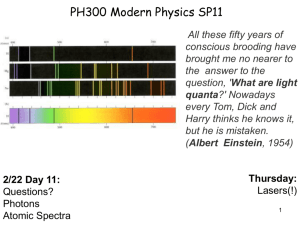Modern Atom Handout
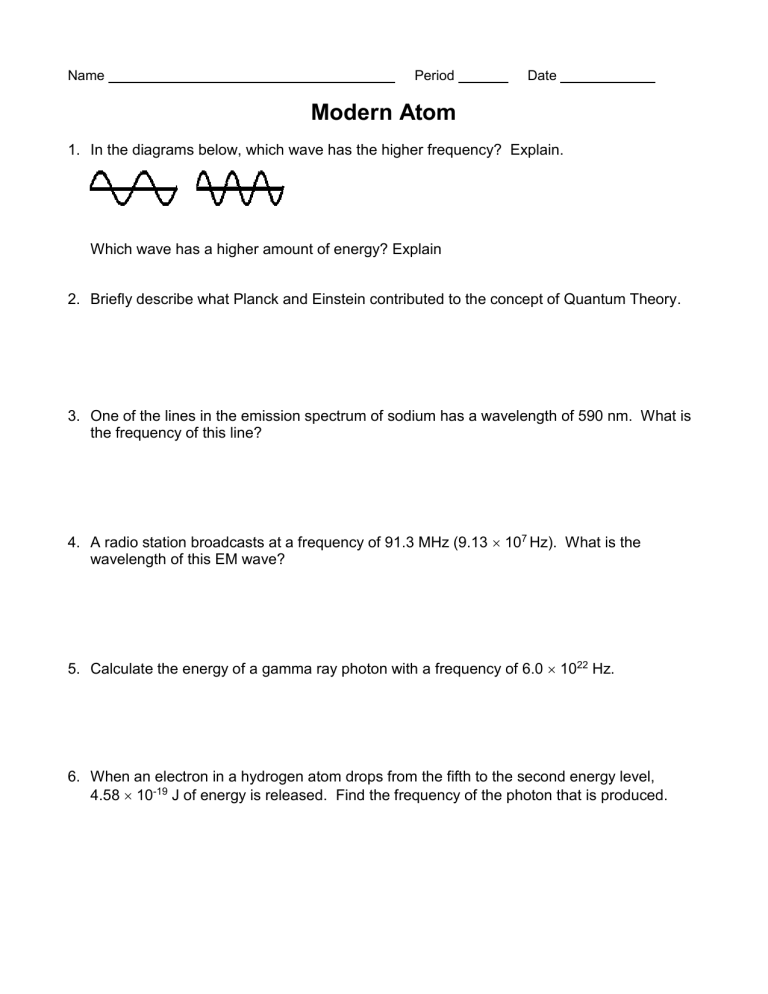
Name Period Date
Modern Atom
1. In the diagrams below, which wave has the higher frequency? Explain.
Which wave has a higher amount of energy? Explain
2. Briefly describe what Planck and Einstein contributed to the concept of Quantum Theory.
3. One of the lines in the emission spectrum of sodium has a wavelength of 590 nm. What is the frequency of this line?
4. A radio station broadcasts at a frequency of 91.3 MHz (9.13
10 7 Hz). What is the wavelength of this EM wave?
5. Calculate the energy of a gamma ray photon with a frequency of 6.0
10 22 Hz.
6. When an electron in a hydrogen atom drops from the fifth to the second energy level,
4.58
10 -19 J of energy is released. Find the frequency of the photon that is produced.
7. Order the following regions of the EM spectrum from lowest to highest energy: infrared, microwaves, ultraviolet, visible red, visible green, X-rays.
8. Circle the type of EM radiation that has the property indicated.
a. Higher photon energy: UV or microwaves? b. Longer wavelength: Blue light or IR?
c. Higher frequency: X-rays or green light?
9. In the Bohr Model of the atom, electrons are arranged in fixed orbits called principal energy levels at increasing distances from the nucleus. Under certain conditions, electrons can make transitions from one energy level to another.
Answer the following concerning electron transitions in atoms:
When atoms absorb / emit (circle one) energy, electrons make transitions from low to high energy levels. When atoms absorb / emit (circle one) energy, electrons make transitions from high to low energy levels. What form of energy are atoms allowed to absorb?
What form of energy are atoms allowed to emit?
10. An ultraviolet lamp emits UV radiation. The energy of a single photon of this radiation is 6.056 x 10
-16
J.
What is the wavelength (in nm) of this UV radiation?
